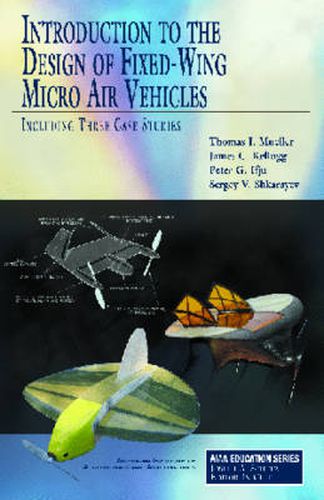Readings Newsletter
Become a Readings Member to make your shopping experience even easier.
Sign in or sign up for free!
You’re not far away from qualifying for FREE standard shipping within Australia
You’ve qualified for FREE standard shipping within Australia
The cart is loading…






This intriguing book breaks new ground on an emerging subject that has attracted considerable attention: the use of unmanned Micro Air Vehicles (MAVs) to conduct special, limited duration missions. Significant advances in the miniaturization of electronics make it now possible to use vehicles of this type in a detection or surveillance role to carry visual, acoustic, chemical, or biological sensors. Interestingly, many of the advances in MAV technology can be traced directly to annual student competitions, begun in the late 1990s, that use relatively low cost model airplane equipment. The wide variety of configurations entered in these contests and their ongoing success has led to a serious interest in testing the performance of these vehicles for adaptation to practical applications. MAVs present aerodynamic issues unique to their size and the speeds at which they operate. Of particular concern is the aerodynamic efficiency of various fixed wing concepts. Very little information on the performance of low aspect ratio wing planforms existed for this flight regime until MAVs became of interest and the proliferation of fixed wing designs has since expanded.This book presents a brief history of unmanned air vehicles and offers elements of aerodynamics for low aspect ratio wings. Propulsion and the basic concepts for fixed wing MAV design are presented, as is a method for autopilot integration. Three different wing configurations are presented in a series of step-by-step case studies. The goal of the book is to assist both working professionals and students to design, build, and fly MAVs, and do so in a way that will advance the state of the art and lead to the development of even smaller aircraft.
$9.00 standard shipping within Australia
FREE standard shipping within Australia for orders over $100.00
Express & International shipping calculated at checkout
This intriguing book breaks new ground on an emerging subject that has attracted considerable attention: the use of unmanned Micro Air Vehicles (MAVs) to conduct special, limited duration missions. Significant advances in the miniaturization of electronics make it now possible to use vehicles of this type in a detection or surveillance role to carry visual, acoustic, chemical, or biological sensors. Interestingly, many of the advances in MAV technology can be traced directly to annual student competitions, begun in the late 1990s, that use relatively low cost model airplane equipment. The wide variety of configurations entered in these contests and their ongoing success has led to a serious interest in testing the performance of these vehicles for adaptation to practical applications. MAVs present aerodynamic issues unique to their size and the speeds at which they operate. Of particular concern is the aerodynamic efficiency of various fixed wing concepts. Very little information on the performance of low aspect ratio wing planforms existed for this flight regime until MAVs became of interest and the proliferation of fixed wing designs has since expanded.This book presents a brief history of unmanned air vehicles and offers elements of aerodynamics for low aspect ratio wings. Propulsion and the basic concepts for fixed wing MAV design are presented, as is a method for autopilot integration. Three different wing configurations are presented in a series of step-by-step case studies. The goal of the book is to assist both working professionals and students to design, build, and fly MAVs, and do so in a way that will advance the state of the art and lead to the development of even smaller aircraft.